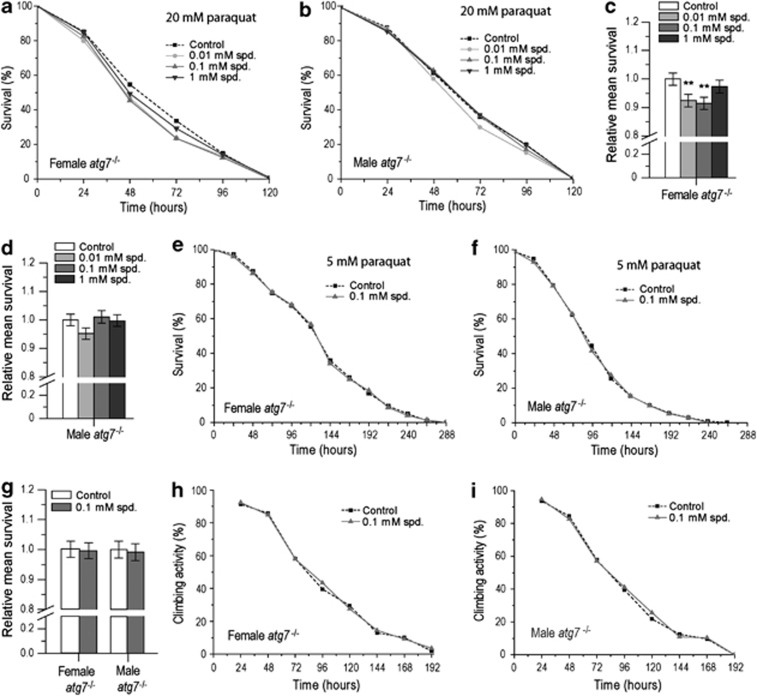Figure 2.
Spermidine treatment does not promote either paraquat resistance or locomotor activity in autophagy-deficient Drosophila. (a and b) Survival curve for female (a) and male (b) atg7−/− flies exposed to 20 mM paraquat and treated with either no spermidine (control), 0.01, 0.1 or 1 mM spermidine (spd.). Results represent the pooled data of five independent replicate experiments. (c and d) Relative mean survival±S.E.M. for female (c) and male (d) atg7−/− flies exposed to 20 mM paraquat and treated with either no spermidine (control), 0.01, 0.1 or 1 mM spd. Mean survival was normalized to the untreated control. Results represent the pooled data of five independent replicate experiments (**P<0.01). (e and f) Survival curve for female (e) and male (f) atg7−/− flies exposed to 5 mM paraquat and treated with either no spermidine (control) or 0.1 mM spd. Results represent the pooled data of three independent replicate experiments. (g) Relative mean survival±S.E.M. for female and male atg7−/− flies exposed to 5 mM paraquat and treated with either no spermidine (control) or 0.1 mM spd. Mean survival was normalized to the untreated control. Results represent the pooled data of three independent replicate experiments. (h and i) Climbing activity curve for female (h) and male (i) atg7−/− flies exposed to 5 mM paraquat and treated with or without 0.1 mM spd. Results show the percentage of flies able to climb 8 cm of the vial in 10 s and represent the pooled data of three independent replicate experiments

